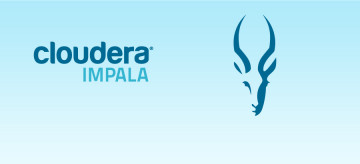- Advertising
- Bare Metal
- Bare Metal Cloud
- Benchmarks
- Big Data Benchmarks
- Big Data Experts Interviews
- Big Data Technologies
- Big Data Use Cases
- Big Data Week
- Cloud
- Data Lake as a Service
- Databases
- Dedicated Servers
- Disaster Recovery
- Features
- Fun
- GoTech World
- Hadoop
- Healthcare
- Industry Standards
- Insurance
- Linux
- News
- NoSQL
- Online Retail
- People of Bigstep
- Performance for Big Data Apps
- Press
- Press Corner
- Security
- Tech Trends
- Tutorial
- What is Big Data
Bigstep – a UK Cloud Award winner?

Awards and commendations are not to be taken lightly, especially for an emerging business such as ourselves. That is why we are delighted and excited to be nominated in the UK Cloud Awards 2014, in the category of ‘newcomer of the year’
But we are up against stiff competition in the form of Nutanix, so aren’t taking anything for granted. But what is interesting is that both companies are so different and it boils down to bare metal versus virtualisation. This is why we believe bare metal is the best option.
Bare metal or virtualisation?
Whilst virtualisation can offer many things to businesses, when it comes to speed and power we believe it is lacking. Virtualisation eats performance and its speed just doesn’t compare to that of bare-metal.
That’s why it’ll be interesting tonight at the UK Cloud Awards 2014. We are nominated in the ‘newcomer of the year’ category, competing against Nutanix. Nutanix is undoubtedly a strong organisation. It has impressive technology, growth and customers, especially when you consider it has only been in business for a few years.
But we live in an era of big data. The ability to extra business insight from this big data is an increasingly valuable tool an organisation can have at its disposal and if that can be done in real-time, even better. But virtual environments struggle to deliver big data analysis in the required time frames.
Big data requires big performance
‘You would say that’, I hear many of you cry. But it isn’t just us that says so. A number of industry experts have researched this topic in great detail, including computing expert and blogger, Peter Senna and IBM.
This view was supported by GigaSpaces CTO & Founder Nati Shalom, who estimated that based on the different benchmarks, running I/O intrusive workloads (big data) on a virtualised infrastructure would require ‘three times more resources than its bare metal equivalent’.
This is a major time difference and in modern business I would suggest this is mostly unacceptable and comes with significant cost implications. So when we launched our company last year, we did so as a true alternative to the competition, removing the hypervisor to deliver the world’s most powerful public cloud.
Hypervisors waste at least 20% of the bare metal power of servers and we can deliver a vastly superior performance with the same resources.
Virtualisation is in fact, limiting in several ways:
• You only have access to the physical server through the hypervisor - which filters and interprets every request your applications make, causing delays and loss in performance.
• You can’t know the quality of the physical hardware or the actual workload on the machine. This allows vendors to use cheap, outdated hardware and to oversell infrastructure.
• You can’t predict you own application’s performance or your infrastructure budget. Because VMs are moved from server to server, their performance can change at any time.
We recognise and admire what Nutanix has achieved and there is certainly room for a number of approaches in the market. But whilst we wish Nutanix the very best of luck at the UK Cloud Awards this evening, we are firmly in the bare metal camp in any bare metal verses virtualisation debate. Let’s see what the judges decide!
Readers also enjoyed:

Getting the most out of Impala


Leave a Reply
Your email address will not be published.